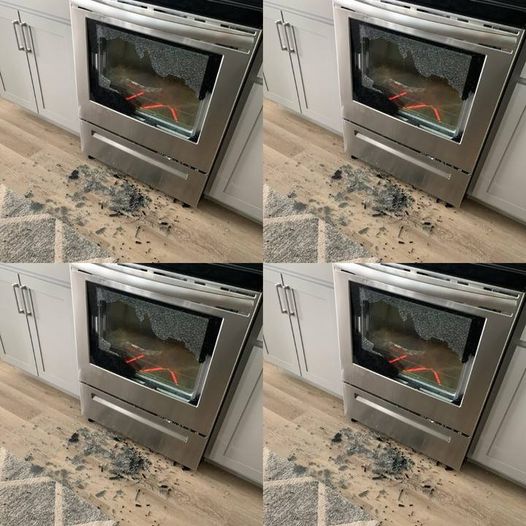ADVERTISEMENT
Thermal Shock: The most common cause of oven glass breakage is thermal shock. This occurs when the glass is subjected to a sudden and extreme change in temperature. For example, if you open a hot oven door and splash cold water on it, or if a cold draft hits a hot oven, the rapid temperature shift can stress the glass to the point of breaking.
However, this doesn’t seem to be the case in your scenario, where the oven wasn’t even on. This suggests that other factors may have been at play.
Manufacturing Defects: Sometimes, imperfections in the glass from the manufacturing process can create weak spots that are susceptible to breaking. These flaws can include bubbles, scratches, or inconsistencies in the glass surface that are not immediately noticeable. Over time, these defects can cause the glass to crack or shatter, even when the oven isn’t being used.
Installation Errors: Poor installation is another potential culprit. If the glass wasn’t properly seated in the oven door frame or if the frame itself was warped, it could exert uneven pressure on the glass. Over time, this constant stress could lead to spontaneous breakage.
Microfractures: Small, invisible cracks known as microfractures can develop in tempered glass over time. These can be caused by daily use, accidental bumps, or even stress during shipping and handling before installation. Even though they’re nearly impossible to see, these microfractures weaken the glass and can eventually cause it to fail.
Impact Damage: While tempered glass is designed to withstand moderate impacts, it is not immune to damage from hard knocks. For instance, if something heavy, such as a pot or a baking sheet, hit the oven door during a previous use, it could have caused tiny fractures. These weak points could eventually lead to the glass shattering days or weeks later, even if the oven was not in use at the time.
Temperature Changes in the Kitchen: It’s also possible that environmental factors in your kitchen contributed to the glass breakage. For example, if your kitchen experienced sudden temperature changes (like a blast of cold air from an open door or window), it might have triggered the glass to shatter.
High Heat Cycles and Age: Over time, exposure to high temperatures can cause tempered glass to weaken, especially if the oven is used frequently. Constant heating and cooling cycles put stress on the material, and after years of use, the integrity of the glass can degrade, leading to spontaneous shattering.
The Immediate Aftermath: Dealing with Shattered Oven Glass
If your oven glass shatters, it’s essential to handle the situation safely and methodically. Here are some steps to follow:
Turn Off the Oven (if it was on): In your case, the oven wasn’t on, but in situations where it is, you should immediately turn it off and let the appliance cool down before handling any glass shards.
Clean Up Carefully: Even though tempered glass breaks into smaller, less sharp pieces, there can still be sharp edges. Wear protective gloves and carefully sweep up the glass fragments. Use a vacuum to pick up tiny shards that may be scattered around the kitchen floor.
Continue Reading in next page
ADVERTISEMENT
